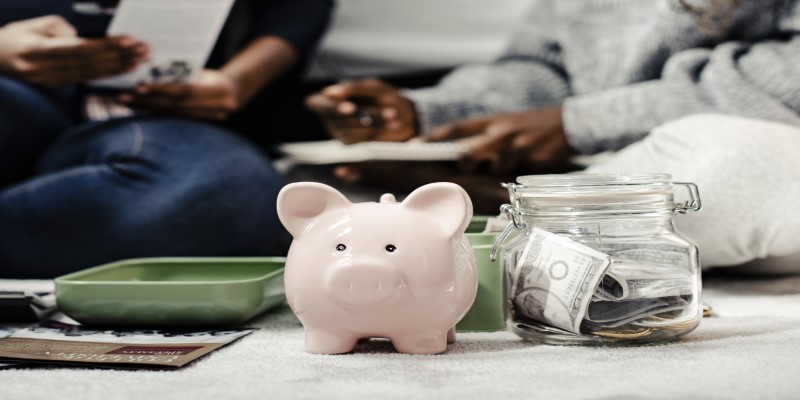Emergency Fund Made Easy: How to Start and Stay Consistent
Advertisement
Life is unpredictable—one moment, everything is fine, and the next, an unexpected expense throws your finances off balance. A car repair, a sudden medical bill, or job loss can create stress if you're unprepared. That's why having an emergency fund is essential. It's not about wealth—it's about having a safety net to handle life's surprises without going into debt.
Saving is not easy, especially when the bills keep piling up, but anyone can start building an emergency fund with the right mindset. It's not about how much you earn but how you prioritize saving. Whether you are starting from scratch or already have some savings, taking small, consistent steps can secure your financial future.
Why You Need an Emergency Fund?
An emergency fund isn’t a luxury—it's essential. It serves as a financial safety net that ensures small crises don't turn into major financial setbacks. Credit cards and loans merely add debt and interest, thereby worsening the situation. Savings provide you with a cushion for dealing with emergencies without stress or long-term financial strain.
Having an emergency fund means you will never have to borrow money when life turns left. It will enable you to pay urgent expenses immediately without touching on your monthly budget or disturbing your financial plans. It's definitely not about surviving tough times; it is to stay in control.
So how much do you need? The general rule is to have three to six months in savings set aside for living expenses. Still too daunting? Don't worry. The point is to start saving, no matter how tiny the amount. And remember, a few hundred dollars can become a lifeline when disaster strikes.
How to Start an Emergency Fund with Limited Income?
If you think you don’t have extra money to save, you’re not alone. Most people feel like they’re barely keeping up with their bills. But saving for emergencies isn’t about having extra cash—it’s about making it a priority. Here’s how you can do it, even with a tight budget.

The first step is to examine your finances closely. Track your expenses and see where your money is going. You might be surprised to find small leaks in your budget—things like unnecessary subscriptions, impulse purchases, or dining out too often. Redirecting just a little money from these areas can be the foundation of your emergency fund.
Next, start small and be consistent. If you can’t set aside a large amount right away, that’s okay. Even saving $10 or $20 a week adds up over time. The key is to make it a habit. Set up an automatic transfer to a separate savings account dedicated to emergencies. When the money moves automatically, you won’t have to think about it—and you won’t be tempted to spend it.
Finding extra cash for savings can be challenging, but there are ways to make it work. Selling things you no longer need, picking up a small side hustle, or using cashback rewards can all contribute to your fund. Every little bit helps, and over time, those small contributions will grow into something substantial.
Where to Keep Your Emergency Fund?
Once you start saving, you need a safe place to keep your money. An emergency fund should be easily accessible but not too easy to spend on non-emergencies. Keeping it in your regular checking account might be tempting, but it also makes it too easy to dip into when you want something that isn’t truly an emergency.
The best place for your emergency fund is a high-yield savings account. These accounts offer better interest rates than traditional savings accounts, helping your money grow while still being available when you need it. Some online banks even offer higher rates than brick-and-mortar banks, so it’s worth exploring your options.
You could also consider keeping part of your emergency fund in cash for quick access in case of urgent, small-scale emergencies. However, for larger amounts, a bank account is safer and ensures your money isn’t sitting idle.
Resist the temptation to invest your emergency fund in stocks or other risky assets. The goal of this fund isn’t to make money—it’s to be there when you need it. Investments can lose value, and the last thing you want is to be forced to sell at a loss when you’re in a crisis.
How to Stay Committed and Keep Growing Your Fund?
Starting an emergency fund is one thing—sticking to it is another. It’s easy to lose motivation, especially when saving feels slow or when other expenses come up. The key is to treat your emergency fund like a non-negotiable expense, just like rent or utilities.

A good way to stay on track is to set a specific savings goal. Instead of saying, "I want to save for emergencies," decide on an exact number—maybe $1,000 as a starting point—and work your way up. Seeing progress, even in small increments, can be motivating.
Life happens, and sometimes you’ll need to dip into your fund. That’s okay—it’s there for that reason. But once you use it, make replenishing it a priority. Think of it like filling up your car’s gas tank after a long trip. The sooner you top it up, the safer you’ll be for the next unexpected event.
One way to stay committed is to make saving more rewarding. If you reach a milestone, such as saving your first $500 or $1,000, reward yourself with something small but meaningful—a nice meal or a day off to celebrate your progress. Saving shouldn’t feel like a punishment; it should feel like securing your future.
Conclusion
An emergency fund isn’t just about saving money—it’s about securing peace of mind. Life will always bring unexpected expenses, but having a financial cushion ensures you stay in control. Even if you start small, consistency matters more than the amount. Make saving a habit, prioritize building your fund, and replenish it whenever needed. The sooner you start, the stronger your financial safety net becomes. With an emergency fund in place, you’ll handle life’s surprises with confidence and less stress.
Advertisement












